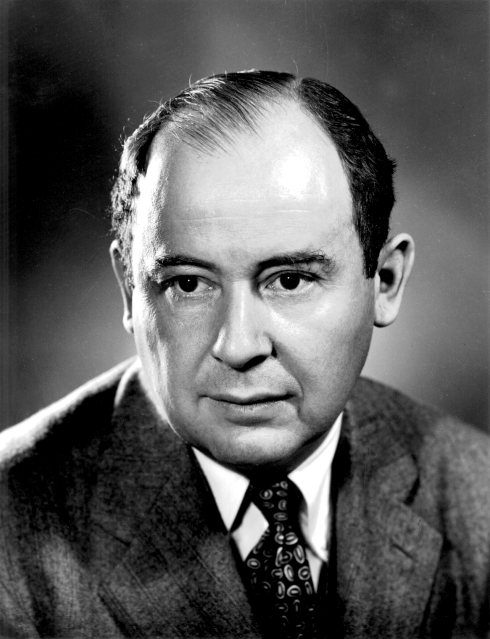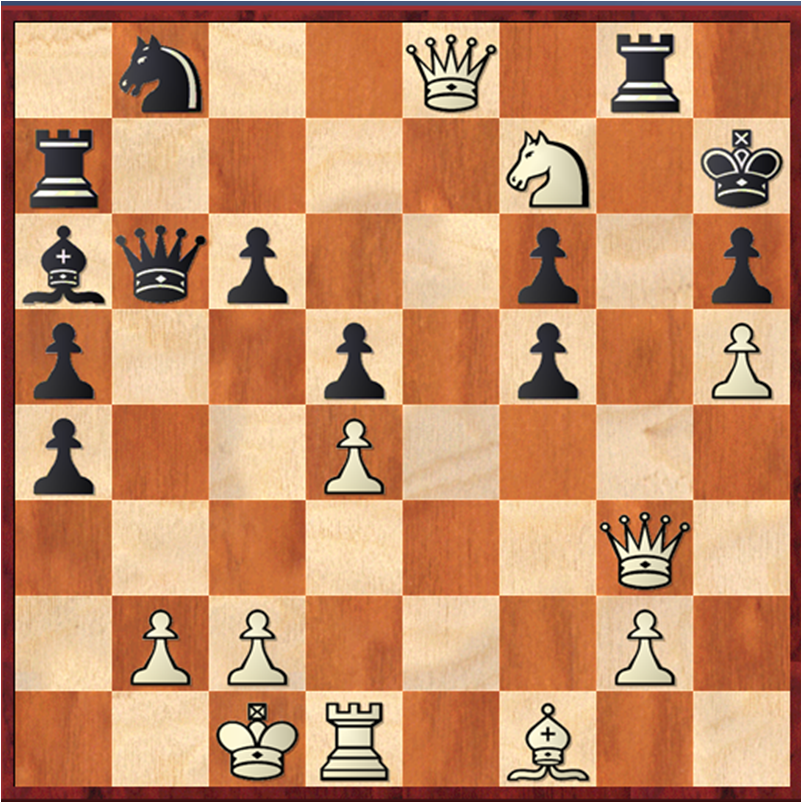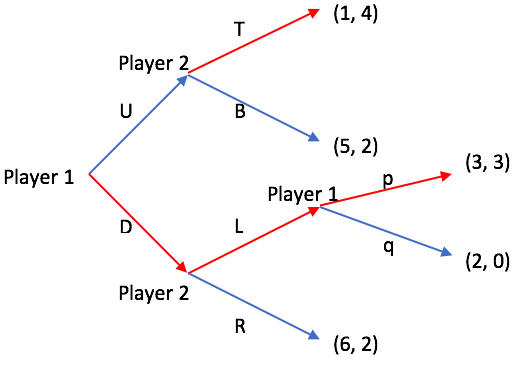|
Farsightedness (game Theory)
In game theory, farsightness refers to players’ ability to consider the long-term consequences of their strategies, beyond immediate payoffs, often formalized as farsighted stability where players anticipate future moves and stable outcomes. In static games, players optimize payoffs based on current information, as in the Nash equilibrium, but farsightedness involves anticipating dynamic or repeated interactions, such as in coalition games like hedonic games where preferences shape long-term alliances. For example, in a repeated Prisoner's Dilemma, a farsighted player might cooperate to encourage future cooperation, unlike the one-shot case where defection prevails. Similarly, a player might refuse a small immediate payoff to build a more valuable alliance later. Farsightedness assumes significant foresight and computational ability, which may be unrealistic in complex scenarios. In evolutionary settings, myopic strategies might dominate if immediate survival outweighs long-t ... [...More Info...] [...Related Items...] OR: [Wikipedia] [Google] [Baidu] |
Game Theory
Game theory is the study of mathematical models of strategic interactions. It has applications in many fields of social science, and is used extensively in economics, logic, systems science and computer science. Initially, game theory addressed two-person zero-sum games, in which a participant's gains or losses are exactly balanced by the losses and gains of the other participant. In the 1950s, it was extended to the study of non zero-sum games, and was eventually applied to a wide range of Human behavior, behavioral relations. It is now an umbrella term for the science of rational Decision-making, decision making in humans, animals, and computers. Modern game theory began with the idea of mixed-strategy equilibria in two-person zero-sum games and its proof by John von Neumann. Von Neumann's original proof used the Brouwer fixed-point theorem on continuous mappings into compact convex sets, which became a standard method in game theory and mathematical economics. His paper was f ... [...More Info...] [...Related Items...] OR: [Wikipedia] [Google] [Baidu] |
Nash Equilibrium
In game theory, the Nash equilibrium is the most commonly used solution concept for non-cooperative games. A Nash equilibrium is a situation where no player could gain by changing their own strategy (holding all other players' strategies fixed). The idea of Nash equilibrium dates back to the time of Cournot, who in 1838 applied it to his model of competition in an oligopoly. If each player has chosen a strategy an action plan based on what has happened so far in the game and no one can increase one's own expected payoff by changing one's strategy while the other players keep theirs unchanged, then the current set of strategy choices constitutes a Nash equilibrium. If two players Alice and Bob choose strategies A and B, (A, B) is a Nash equilibrium if Alice has no other strategy available that does better than A at maximizing her payoff in response to Bob choosing B, and Bob has no other strategy available that does better than B at maximizing his payoff in response to Alice c ... [...More Info...] [...Related Items...] OR: [Wikipedia] [Google] [Baidu] |
Dynamic Game
In game theory, a sequential game is defined as a game where one player selects their action before others, and subsequent players are informed of that choice before making their own decisions. This turn-based structure, governed by a time axis, distinguishes sequential games from simultaneous games, where players act without knowledge of others’ choices and outcomes are depicted in payoff matrices (e.g., rock-paper-scissors). Sequential games are a type of dynamic game, a broader category where decisions occur over time (e.g., differential games), but they specifically emphasize a clear order of moves with known prior actions. Because later players know what earlier players did, the order of moves shapes strategy through information rather than timing alone. Sequential games are typically represented using decision trees, which map out all possible sequences of play, unlike the static matrices of simultaneous games. Examples include chess, infinite chess, backgammon, tic-ta ... [...More Info...] [...Related Items...] OR: [Wikipedia] [Google] [Baidu] |
Repeated Game
In game theory, a repeated game (or iterated game) is an extensive form game that consists of a number of repetitions of some base game (called a stage game). The stage game is usually one of the well-studied 2-person games. Repeated games capture the idea that a player will have to take into account the impact of their current action on the future actions of other players; this impact is sometimes called their reputation. Single stage game or single shot game are names for non-repeated games. Example Consider two gas stations that are adjacent to one another. They compete by publicly posting pricing, and have the same and constant marginal cost ''c'' (the wholesale price of gasoline). Assume that when they both charge , their joint profit is maximized, resulting in a high profit for everyone. Despite the fact that this is the best outcome for them, they are motivated to deviate. By modestly lowering the price, either can steal all of their competitors' customers, nearly doub ... [...More Info...] [...Related Items...] OR: [Wikipedia] [Google] [Baidu] |
Hedonic Games
In cooperative game theory, a hedonic gameHaris Aziz and Rahul Savani, "Hedonic Games". Chapter 15 in: (also known as a hedonic coalition formation game) is a game that models the formation of coalitions (groups) of players when players have preferences over which group they belong to. A hedonic game is specified by giving a finite set of players, and, for each player, a preference relation, preference ranking over all coalitions (subsets) of players that the player belongs to. The outcome of a hedonic game consists of a partition of a set, partition of the players into disjoint sets, disjoint coalitions, that is, each player is assigned a unique group. Such partitions are often referred to as coalition structures. Hedonic games are a type of non-transferable utility game. Their distinguishing feature (the "hedonic aspect") is that players only care about the ''identity'' of the players in their coalition, but do not care about how the remaining players are partitioned, and do not c ... [...More Info...] [...Related Items...] OR: [Wikipedia] [Google] [Baidu] |
Prisoner's Dilemma
The prisoner's dilemma is a game theory thought experiment involving two rational agents, each of whom can either cooperate for mutual benefit or betray their partner ("defect") for individual gain. The dilemma arises from the fact that while defecting is rational for each agent, cooperation yields a higher payoff for each. The puzzle was designed by Merrill Flood and Melvin Dresher in 1950 during their work at the RAND Corporation. They invited economist Armen Alchian and mathematician John Williams to play a hundred rounds of the game, observing that Alchian and Williams often chose to cooperate. When asked about the results, John_Forbes_Nash_Jr., John Nash remarked that rational behavior in the Prisoner's dilemma#The_iterated_prisoner's_dilemma, iterated version of the game can differ from that in a single-round version. This insight anticipated a Folk_theorem_(game_theory), key result in game theory: cooperation can emerge in repeated interactions, even in situations where it i ... [...More Info...] [...Related Items...] OR: [Wikipedia] [Google] [Baidu] |
Evolutionary Game Theory
Evolutionary game theory (EGT) is the application of game theory to evolving populations in biology. It defines a framework of contests, strategies, and analytics into which Darwinism, Darwinian competition can be modelled. It originated in 1973 with John Maynard Smith and George R. Price's formalisation of contests, analysed as strategies, and the mathematical criteria that can be used to predict the results of competing strategies. Evolutionary game theory differs from classical game theory in focusing more on the dynamics of strategy change. This is influenced by the frequency of the competing strategies in the population. Evolutionary game theory has helped to explain the basis of altruism (biology), altruistic behaviours in Darwinian evolution. It has in turn become of interest to economists, sociologists, anthropologists, and philosophers. History Classical game theory Classical non-cooperative game theory was conceived by John von Neumann to determine optimal strategies i ... [...More Info...] [...Related Items...] OR: [Wikipedia] [Google] [Baidu] |
Evolutionarily Stable Strategy
An evolutionarily stable strategy (ESS) is a strategy (or set of strategies) that is ''impermeable'' when adopted by a population in adaptation to a specific environment, that is to say it cannot be displaced by an alternative strategy (or set of strategies) which may be novel or initially rare. Introduced by John Maynard Smith and George R. Price in 1972/3, it is an important concept in behavioural ecology, evolutionary psychology, mathematical game theory and economics, with applications in other fields such as anthropology, philosophy and political science. In game-theoretical terms, an ESS is an equilibrium refinement of the Nash equilibrium, being a Nash equilibrium that is also "evolutionarily stable." Thus, once fixed in a population, natural selection alone is sufficient to prevent alternative ( mutant) strategies from replacing it (although this does not preclude the possibility that a better strategy, or set of strategies, will emerge in response to selective press ... [...More Info...] [...Related Items...] OR: [Wikipedia] [Google] [Baidu] |
Evolutionary Game Theory
Evolutionary game theory (EGT) is the application of game theory to evolving populations in biology. It defines a framework of contests, strategies, and analytics into which Darwinism, Darwinian competition can be modelled. It originated in 1973 with John Maynard Smith and George R. Price's formalisation of contests, analysed as strategies, and the mathematical criteria that can be used to predict the results of competing strategies. Evolutionary game theory differs from classical game theory in focusing more on the dynamics of strategy change. This is influenced by the frequency of the competing strategies in the population. Evolutionary game theory has helped to explain the basis of altruism (biology), altruistic behaviours in Darwinian evolution. It has in turn become of interest to economists, sociologists, anthropologists, and philosophers. History Classical game theory Classical non-cooperative game theory was conceived by John von Neumann to determine optimal strategies i ... [...More Info...] [...Related Items...] OR: [Wikipedia] [Google] [Baidu] |
Cooperative Game Theory
In game theory, a cooperative game (or coalitional game) is a game with groups of players who form binding “coalitions” with external enforcement of cooperative behavior (e.g. through contract law). This is different from non-cooperative games in which there is either no possibility to forge alliances or all agreements need to be self-enforcing (e.g. through credible threats). Cooperative games are analysed by focusing on coalitions that can be formed, and the joint actions that groups can take and the resulting collective payoffs. Mathematical definition A cooperative game is given by specifying a value for every coalition. Formally, the coalitional game consists of a finite set of players N , called the ''grand coalition'', and a ''characteristic function'' v : 2^N \to \mathbb from the set of all possible coalitions of players to a set of payments that satisfies v( \emptyset ) = 0 . The function describes how much collective payoff a set of players can gain by ... [...More Info...] [...Related Items...] OR: [Wikipedia] [Google] [Baidu] |
Hedonic Games
In cooperative game theory, a hedonic gameHaris Aziz and Rahul Savani, "Hedonic Games". Chapter 15 in: (also known as a hedonic coalition formation game) is a game that models the formation of coalitions (groups) of players when players have preferences over which group they belong to. A hedonic game is specified by giving a finite set of players, and, for each player, a preference relation, preference ranking over all coalitions (subsets) of players that the player belongs to. The outcome of a hedonic game consists of a partition of a set, partition of the players into disjoint sets, disjoint coalitions, that is, each player is assigned a unique group. Such partitions are often referred to as coalition structures. Hedonic games are a type of non-transferable utility game. Their distinguishing feature (the "hedonic aspect") is that players only care about the ''identity'' of the players in their coalition, but do not care about how the remaining players are partitioned, and do not c ... [...More Info...] [...Related Items...] OR: [Wikipedia] [Google] [Baidu] |
Subgame Perfect Equilibrium
In game theory, a subgame perfect equilibrium (SPE), or subgame perfect Nash equilibrium (SPNE), is a refinement of the Nash equilibrium concept, specifically designed for dynamic games where players make sequential decisions. A strategy profile is an SPE if it represents a Nash equilibrium in every possible subgame of the original game. Informally, this means that at any point in the game, the players' behavior from that point onward should represent a Nash equilibrium of the continuation game (i.e. of the subgame), no matter what happened before. This ensures that strategies are credible and rational throughout the entire game, eliminating non-credible threats. Every finite extensive game with complete information (all players know the complete state of the game) and perfect recall (each player remembers all their previous actions and knowledge throughout the game) has a subgame perfect equilibrium. A common method for finding SPE in finite games is backward induction, wher ... [...More Info...] [...Related Items...] OR: [Wikipedia] [Google] [Baidu] |








